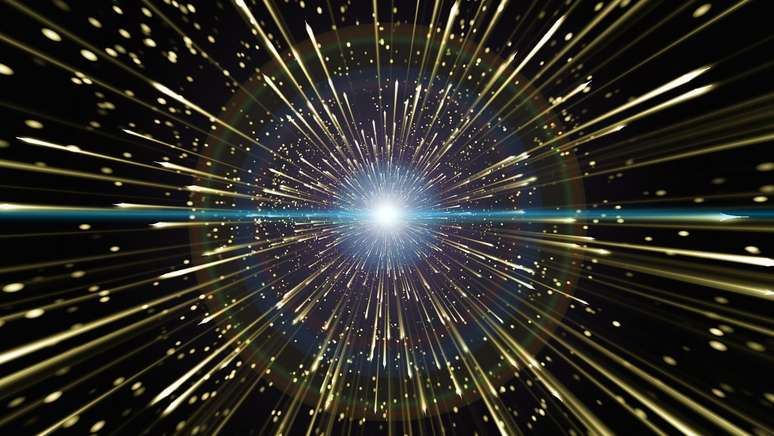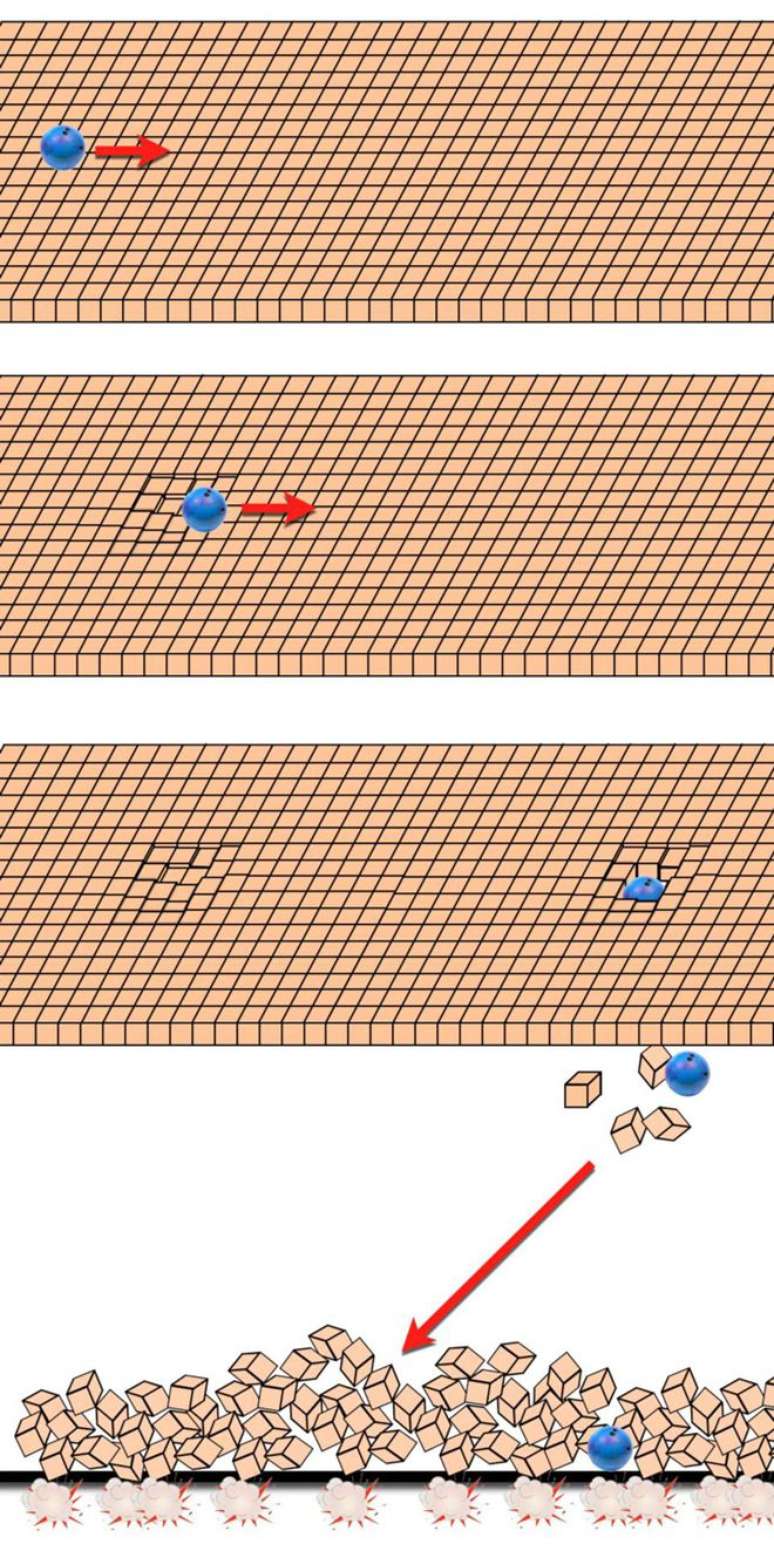The Big Bang was not a singularity, nor was it the beginning of the universe. But what came first? And why didn’t matter collapse into a black hole after the Big Bang?
Until a few decades ago it was thought that the absolute beginning of the universe was a Big Bang of infinite density concentrated in a single point, i.e. a singularity. It turns out that, today, this conception has changed, but there is still some difficulty in spreading the current theories on the origin of everything.
- There is evidence that the universe didn’t start with the Big Bang. And now?
- Big Bang Theory: What is known about the origin of the universe?
The Big Bang was a theoretical prediction from the early 1900s, after a succession of incredible discoveries, such as the expansion of the universe. Around 1927, Georges Lemaître came to the conclusion (which seems quite obvious today, but was still nonsense at the time) that if we went back in time, the expanding universe would shrink.
By extrapolating this throwback to the beginning of time, and knowing that time and space are the same thing, as demonstrated by Einstein, it is easy to conclude that the universe’s “zero” time was also a space of “zero” measure. In other words, 13.7 billion years ago (the age of the universe), everything was compressed into one point.
A singularity is an awkward topic for physicists, by its very definition: a singular point of infinite density and infinitesimal size, smaller and more massive than any law of physics would allow. The problem is that the General Theory of Relativity allows for the existence of these controversial objects, so many physicists have worked to demonstrate how they could form inside extremely dense structures, such as black holes.
By the same token, scientists were convinced for much of the 20th century that the Big Bang originated from a singularity, where all matter and energy in our cosmos would be compacted. While black holes also appeared to be a singularity, it’s tempting to imagine the Big Bang as “the mother of all black holes.”
Then, at some point, some mechanism caused this singularity to expand, releasing all this matter and energy to form the universe. This has also brought many physicists like Stephen Hawkingthink that the universe would be cyclical: one day, the dark energy responsible for the expansion of the universe will end and the gravity will make everything collapse again in a singularity. This idea is known as the Big Chunch.
The Big Bang was not a black hole
Today, although the Big Bang is still feasible and verifiable by observations, physicists have another notion about the beginning of the universe. In the 80s, the idea of cosmic inflation it was born as a proposal to answer some questions that the Big Bang could not explain, and it worked. Since then, the cosmic inflation model has gained increasing acceptance in scientific circles.
This theory shows that, before the Big Bang, there was an inflationary period that served as a “preparation” for what came next. At that time, the universe was expanding exponentially, at a very accelerated rate, shaping all pre-existing elements – such as quantum fields and their fluctuations – and “stretching” them. This is where things get interesting, because these early configurations can still be observed today.
The Big Bang model with a singularity shows a universe that was simply “born” with this set of quantum configurations and fluctuations. In the inflationary model, the Big Bang comes only after the period of cosmic inflation, which left the initial quantum fluctuations “imprinted” on the universe as it evolved.

These quantum fluctuations are generated at the smallest scales and stretched to larger scales by cosmic inflation, forming the imperfections seen in the cosmic microwave background (the fossil light from the Big Bang). That is, the imperfections had already been seeded by quantum fluctuations before the Big Bang.
If that’s true, there are two implications to the Big Bang: It’s not the beginning of everything, and it’s definitely not a black hole, much less a singularity. Of course, 13.7 billion years ago it was still incredibly small – in the time 10⁻³⁵ seconds after the Big Bang, it was only 1.5 meters. It already had all the matter/energy (both are different manifestations of the same thing) that we see today, so with that tiny size, the density would surely collapse into a black hole.
But that couldn’t happen with the Big Bang, since the formation of a black hole also depends on a space of insignificant density around it for gravity to kick in. If the density is the same everywhere, there are no gravitational differences and therefore no collapse into a black hole.
This means the following: in the model of the first Big Bang, the “black hole” would be literally in the middle of nowhere, since all space and time were compacted together with all the matter of the cosmos, in that singular point of infinitesimal measure. Black holes are mostly distortions in space-time, and there was no space or time outside of the Big Bang. Result: No collapse could occur.
But could it be that even though it wasn’t a black hole, the Big Bang wasn’t a singularity? Well, there’s something else preventing that from happening: the early universe was dynamic. It evolved and was expanding.
The Big Bang was not a singularity
We said above that dark energy is responsible for the expansion of the universe. It is still unknown what exactly it is, but if the cosmos keeps expanding and accelerating, something is causing it to happen and that something has been called dark energy. Keeping the universe from expanding until it all collapses into a black hole requires far more matter than exists.
There simply isn’t enough mass in the universe for gravity to overcome dark energy and pull everything back into a singularity. It is precisely for this reason that the cosmos did not collapse after the Big Bang and, as far as we know, it will not collapse in the future.
Finally, the inflationary model does not allow going back in time until the universe is compacted into a singularity. This is due to the exponential nature of cosmic inflation: even if we go back an infinity of time, space will only approach the infinitesimal size and infinite density that define the singularity. That is, it will never actually reach these proportions.
While part of the scientific community opposed the new inflationary model proposals, others began to accept that the Big Bang as a singularity had to be discarded if the model was to be validated. The two things are in conflict and cannot “coexist” in the same theory.
More and more physicists are finding evidence that validates the inflationary model. Not only does it make observable predictions, it solves problems that the single Big Bang can’t explain. The bad news is that the nature of cosmic inflation doesn’t allow us to know what came first. The inflation could have lasted countless times, it could have been a short period or even several periods and stages.
For now, there is no known way to know this phase of our universe. Was there a singularity before inflation? There’s simply no way to theorize about it, at least not yet.
Trending on Canaltech:
- WhatsApp prepares a new look for the top bar of the app
- One UI 6 is starting to be tested by the public, reveals a whistleblower
- Google launches a professional course in digital marketing and e-commerce
- Iron Man repeats one of the worst mistakes Batman has ever made
- NASA Spotlight: The Belt of Venus is in the day’s astronomical photo
- Android has a new logo confirmed by Google
Source: Terra
Rose James is a Gossipify movie and series reviewer known for her in-depth analysis and unique perspective on the latest releases. With a background in film studies, she provides engaging and informative reviews, and keeps readers up to date with industry trends and emerging talents.






